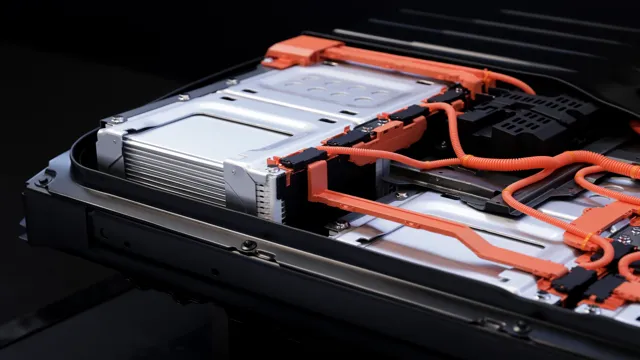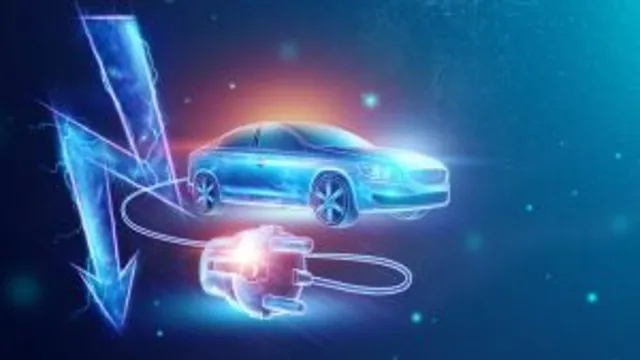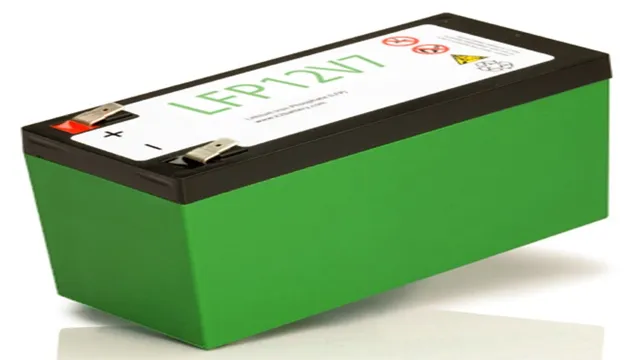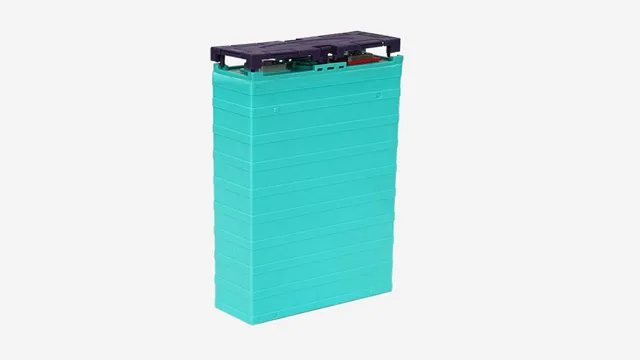Powering the Future: The Ultimate Guide to Battery Packs of Electric Cars
If you’re considering purchasing an electric car, you might be curious about the battery packs that power them. These packs are the heart of electric vehicles, providing the energy needed to propel them forward. But what exactly are battery packs, and how do they work? In simplest terms, a battery pack is a collection of individual batteries that work together to store and provide power.
In the case of electric cars, this pack is made up of hundreds or even thousands of lithium-ion cells wired together. These cells store electrical energy that is then converted into mechanical energy to power the electric car’s motor. But there’s more to these battery packs than meets the eye.
They’re not just a simple collection of cells – they’re carefully designed and engineered to provide the best possible performance. They need to be reliable, safe, and durable, providing enough power to keep the car moving for hundreds of miles without needing a recharge. Battery packs are undoubtedly a crucial part of electric cars, and their design and development are constantly evolving.
As technology improves, so too do battery packs, becoming increasingly efficient and cost-effective. While electric cars may have once been considered a novelty, they’re now a serious contender in the world of transportation – and it’s all thanks to the incredible power of their battery packs.
Introduction
Battery packs of electric cars are essential components that store electrical energy and power the car’s electric motors. The battery packs are composed of multiple rechargeable lithium-ion cells, which convert chemical energy into electrical energy. These cells are manufactured in cylindrical or pouch forms and are connected in series or parallel to create a battery pack with the desired voltage and capacity.
Battery packs are one of the most expensive components of an electric car and can significantly impact the overall cost of the vehicle. However, advancements in battery technology have led to the development of more efficient and durable battery packs that provide longer ranges and faster charging times. The adoption of electric cars is expected to increase in the coming years, and battery pack technology will continue to evolve to meet the growing demand for sustainable transportation solutions.
Battery Technology Evolution
Battery technology has undergone a remarkable evolution over the past few decades. The development of battery technology has been a response to the growing need for green and sustainable energy sources. The design and functionality of batteries have come a long way since the invention of the first battery in the 1800s.
Modern batteries are more efficient and much less bulky than their predecessors. They have much higher energy densities, are capable of charging more quickly, and can hold more charge. Lithium-ion batteries, which are used in most electronic devices today, are a good example of how battery technology has evolved.
They are thinner, lighter, and can hold a charge much longer than previous batteries. Additionally, they’re rechargeable, making them more eco-friendly than disposable batteries. The evolution of battery technology continues, with the development of new materials and innovative designs promising to make batteries even more efficient and sustainable in the future.
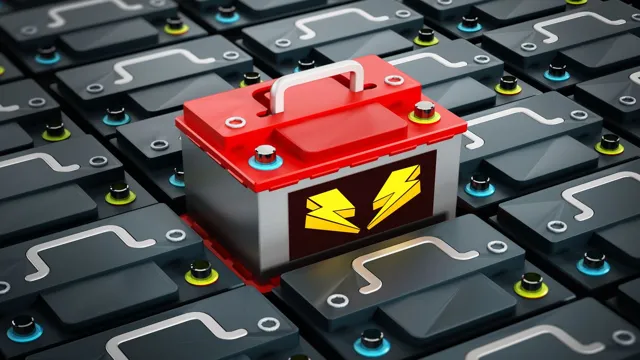
Importance of Battery Packs in Electric Cars
Electric cars are quickly becoming the norm, and for good reason. They are eco-friendly, energy efficient, and low maintenance. However, their reliance on battery packs to power the vehicle is critical to their success.
Battery packs are the life force of electric cars and are essential to their operation. They store the vehicle’s energy and provide the necessary power to keep it moving. The importance of a battery pack cannot be overstated.
It is the key to the electric car’s performance and range, making it a critical component in the transition to a more sustainable future. Without a high-quality, reliable battery pack, electric cars cannot function at their full potential. Hence, it’s crucial that the right kind of battery pack is installed in an electric car, providing enough energy supply to ensure optimum performance.
Battery Pack Composition
Battery packs of electric cars are made up of a complex combination of components. These components include hundreds or even thousands of individual battery cells, voltage and temperature sensors, as well as electronic controllers. Lithium-ion batteries are commonly used in electric car battery packs because they have a high energy density, long lifespan, and low self-discharge rates.
The capacity of a battery pack is measured in kilowatt-hours (kWh), and the typical electric car battery pack ranges from around 15kWh to over 100kWh. The battery cells within the pack are arranged in series or parallel circuits, balancing individual cell voltage, and providing the necessary current to the electric motor that powers the car. Overall, battery packs are critical to the performance and range of electric cars, making them an essential component to consider when reviewing and choosing an electric car to purchase.
Cell Types in Battery Pack
The battery pack of electric vehicles consists of various types of cells that vary in size, capacity, and chemistry. These cells are combined and arranged in series and parallel connections to achieve the desired voltage and current ratings of the battery pack. The most common types of cells used in battery packs are lithium-ion, nickel-cadmium, nickel-metal-hydride, and lead-acid.
Each cell type has its advantages and disadvantages, such as energy density, safety, cost, and environmental impact. For example, lithium-ion cells are popular for their high energy density, low self-discharge rate, and long cycle life, but they require sophisticated control electronics to prevent overcharging or overheating. On the other hand, lead-acid cells are less expensive and more robust, but they have a larger footprint and lower energy density.
Engineers design the battery pack composition based on several factors, including the vehicle’s power and range requirements, weight, cost, and safety.
Battery Management System (BMS)
Battery Pack Composition
The battery pack composition is a fundamental aspect of the Battery Management System (BMS). Essentially, the battery pack is a system of interconnected batteries that provide electrical energy to a device or system. The composition of the battery pack can vary significantly depending on its intended use.Commonly used in electric vehicles, the battery pack will consist of several lithium-ion cells connected in series or parallel to provide the required voltage and capacity. The typical contemporary electric vehicle battery pack may contain thousands of individual lithium-ion cells, each comprising an anode, cathode, and electrolyte. The BMS monitors the voltage, temperature, state-of-charge, and state-of-health of each individual cell, protecting against overcharging, undercharging, and overheating.
The battery pack’s composition plays a crucial role in determining the BMS’s configuration and the overall energy storage capacity and lifespan of the battery.
Packaging Materials
When it comes to battery pack composition, it is important to understand the materials that are commonly used. The most common types of batteries are composed of lithium-ion (Li-ion) or nickel-metal hydride (NiMH). However, Li-ion batteries are used more frequently due to their high energy density, longer lifespan, and lighter weight.
The composition of a Li-ion battery pack is made up of several components, including a cathode, anode, separator, electrolyte, and packaging materials. The cathode is typically made of lithium cobalt oxide or lithium iron phosphate, while the anode is made of graphite or silicon. The separator is used to keep the cathode and anode from touching, while the electrolyte allows for ion transfer between the two components.
Lastly, the packaging materials are used to protect the battery and its components from damage. These materials can include plastics, metal casings, and insulating materials. Overall, understanding the battery pack composition can help users understand the performance, safety, and lifespan of their batteries.
Battery Pack Performance
The performance of battery packs in electric cars is one of the most critical factors for consumers looking to buy electric vehicles. As the industry continues to evolve, the battery packs have become more efficient and long-lasting. The performance of a battery pack determines how fast an electric car can travel and how far it can go on a single charge.
Therefore, it is essential to consider various factors such as the battery’s capacity and overall efficiency before buying an electric car. Lithium-ion batteries are the most commonly used type of battery in electric cars, offering high performance and long lifespan. However, other battery technologies, such as solid-state batteries and flow batteries, are currently being developed and could provide even better performance and longevity in the future.
As the technology continues to evolve, the performance of battery packs in electric cars is expected to continue improving, leading to greater range, better acceleration, and a more comfortable driving experience.
Range and Capacity
When it comes to electric vehicles, one of the most important aspects to consider is the battery pack performance, particularly the range and capacity. The range of an electric vehicle refers to how far it can travel on a single charge, while the capacity refers to how much energy the battery can hold. These factors determine how often the vehicle needs to be charged and how far it can go before requiring another charge.
Improvements in battery technology, such as the use of better materials and more advanced manufacturing processes, have significantly increased the range and capacity of electric vehicle batteries over the years. As a result, the average range for electric vehicles has now surpassed 200 miles, with some models boasting ranges of over 300 miles on a single charge. Despite these advancements, range anxiety remains a concern for some drivers, which is why many automakers are working on further extending the range and capacity of their electric vehicles.
Charging Speeds
When it comes to battery pack performance, charging speed is a crucial factor to consider. The charging speed determines how quickly your device can be powered up and ready for use. This depends on the charger and the battery’s maximum capacity.
Generally, higher-capacity batteries have a higher charging speed. However, it’s essential to balance speed and safety. Charging too fast can damage the battery, reducing its lifespan and effectiveness.
That’s why many manufacturers have developed technologies that allow for fast charging while also maintaining the battery’s health. So, when choosing a battery pack, it’s crucial to balance the charging speed with the battery’s maximum capacity and safety.
Conclusion
In conclusion, battery packs are the heart and soul of electric cars. They provide the necessary power to move us towards a cleaner and greener future. Just like the beating of a human heart, battery packs keep electric vehicles alive and running smoothly.
And with advancements in technology, we can expect these battery packs to continue to evolve and improve over time. So let’s embrace the power of batteries and drive towards a brighter future together!”
FAQs
What is a battery pack in electric cars?
A battery pack is the collection of individual batteries that are used to power an electric car.
How long does a typical battery pack last in an electric car?
The lifespan of a battery pack in an electric car varies, but on average they can last anywhere from 8-10 years or longer depending on usage and maintenance.
Can the battery pack in an electric car be replaced?
Yes, the battery pack in an electric car can be replaced. However, it can be a costly process and may depend on the model of the car.
How are battery packs in electric cars recycled?
Battery packs in electric cars can be recycled to recover valuable metals such as lithium and cobalt. The recycling process involves breaking down the battery and separating its components for reuse in other products.
